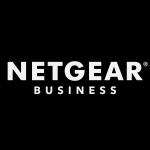What is our primary use case?
In our environment, we are using Cisco switches in Visio clusters. We are using Dell servers, and we are using Dell Precision workstations. I do not remember the model number of the Cisco switches. We are using the Cisco network series of switches and they are the L2 class. I think they are the 2960 series of switches.
At present, our company policy does not allow us to host any of our data on the public cloud. We are revising the information security policy. Until this new policy comes into effect, we will not be able to go into the public cloud.
In the end, the switches will continue to be a component of data interpretation in our environment.
What is most valuable?
My work is able to continue because the switches are reliable. That is mostly what is important to me. I can not say that I like the product more than other switches because I have not worked with other switches in a long time and I have not had any difficulty with these. They are working fine right now and the support is good for so far.
What needs improvement?
In particular, the simplicity of management could be improved. At present, all these switches require a software layer. For example, I am asking for the SDN (Software Defined Networking) for managing a network-based project. Similarly, I would like to get the SDS (Smart Distributed System) for storage projects. Managing things is a little bit difficult, definitely. So, manageability can be improved. At the individual product level, an improvement to the difficulty of management will be very helpful for admin users.
For how long have I used the solution?
I think we have been using these Lynksys Ethernet switches for five or six years, but as far as Cisco products are concerned, we have been using Cisco products for a much longer time.
What do I think about the scalability of the solution?
Overall, my organization has more than 30 or 40 work centers, data centers, and more than about 15 or 20,000 users. It is not possible to tell the exact number of end-users. So we are already running on a large scale. Our plans are to subscribe to a private cloud. By that, I mean we plan to convert the whole data center to cloud services. As far as the technical capabilities are concerned, Cisco Lynksys switches will be something we can still use. Commercially, I do not know if they are feasible. I already talked to a Cisco person about the technical qualifications and he assured me that the product qualifies technically.
How are customer service and technical support?
Personally, I have never taken any personal support, because I have a different team. But there definitely has been no complaint regarding the Cisco support. I cannot say every customer gets the same support, but at our company we definitely have got good support.
Which solution did I use previously and why did I switch?
We use L3 switches in one of the Nexus series of switches. I do not remember the series. We use them concurrently. It depends on the situation.
How was the initial setup?
It is a little difficult to answer if it is straightforward or complex because some parts are easy and some parts are difficult. Also, it will not be possible for me to say first-hand, because when the deployment was going on, I was not here.
Nowadays everything is software-driven. Even network products are configured through NFS (Network File System). Because we have to configure each individual switch, which makes it more complex. Once you are on object-based storage like SDN, it becomes easy to manage things. Most of the time, it is manageability which is complex. It is not the product which is giving us any problems. Managing every little product one-at-a-time is difficult. With something like SDN, or these types of alternative management systems, we can manage all these things through a single software interface — a single pane of glass — that becomes easy.
What other advice do I have?
I would recommend this product for other users who want to start using it. We do not have anything negative to say about the product and it has been serving us well. There would be no reason not to recommend it.
On a scale from one to ten (where one is the worst and ten is the best), I would rate this product from my perspective as a nine-out-of-ten. It would be very difficult for me to give it a higher rating. There are parts of it that can be improved.
Which deployment model are you using for this solution?
On-premises
Disclosure: I am a real user, and this review is based on my own experience and opinions.

















